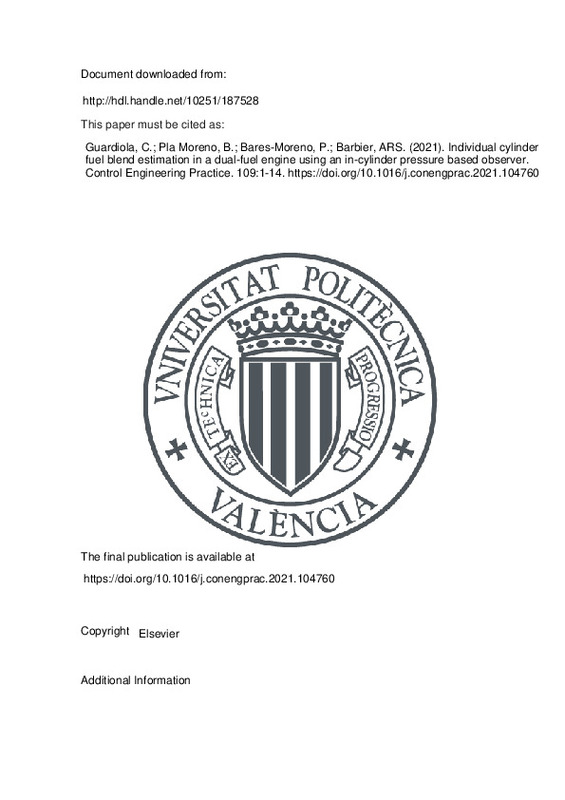JavaScript is disabled for your browser. Some features of this site may not work without it.
Buscar en RiuNet
Listar
Mi cuenta
Estadísticas
Ayuda RiuNet
Admin. UPV
Individual cylinder fuel blend estimation in a dual-fuel engine using an in-cylinder pressure based observer
Mostrar el registro completo del ítem
Guardiola, C.; Pla Moreno, B.; Bares-Moreno, P.; Barbier, ARS. (2021). Individual cylinder fuel blend estimation in a dual-fuel engine using an in-cylinder pressure based observer. Control Engineering Practice. 109:1-14. https://doi.org/10.1016/j.conengprac.2021.104760
Por favor, use este identificador para citar o enlazar este ítem: http://hdl.handle.net/10251/187528
Ficheros en el ítem
Metadatos del ítem
| Título: | Individual cylinder fuel blend estimation in a dual-fuel engine using an in-cylinder pressure based observer | |
| Autor: | ||
| Entidad UPV: |
|
|
| Fecha difusión: |
|
|
| Resumen: |
[EN] Cylinder-to-cylinder combustion dispersion in internal combustion engines might be caused by various factors (e.g. manufacturing variations of the injectors or nozzle coking) which can result in an increase in pollutant ...[+]
|
|
| Palabras clave: |
|
|
| Derechos de uso: | Reconocimiento - No comercial - Sin obra derivada (by-nc-nd) | |
| Fuente: |
|
|
| DOI: |
|
|
| Editorial: |
|
|
| Versión del editor: | https://doi.org/10.1016/j.conengprac.2021.104760 | |
| Código del Proyecto: |
|
|
| Agradecimientos: |
The authors would like to recognize the financial support through Alvin Barbier's grant ACIF/2018/141, Programa Operativo del Fondo Social Europeo (FSE) de la Comunitat Valenciana 2014-2020. The authors also wish to thank ...[+]
|
|
| Tipo: |
|







![[Cerrado]](/themes/UPV/images/candado.png)


